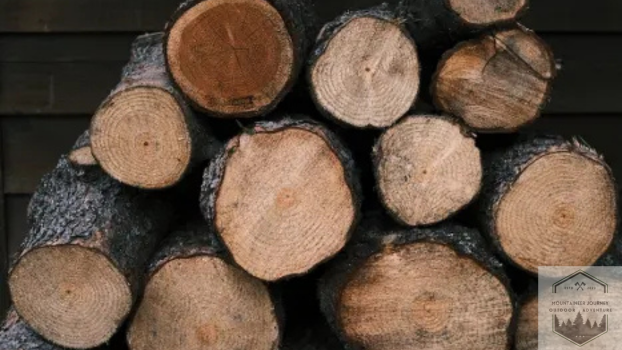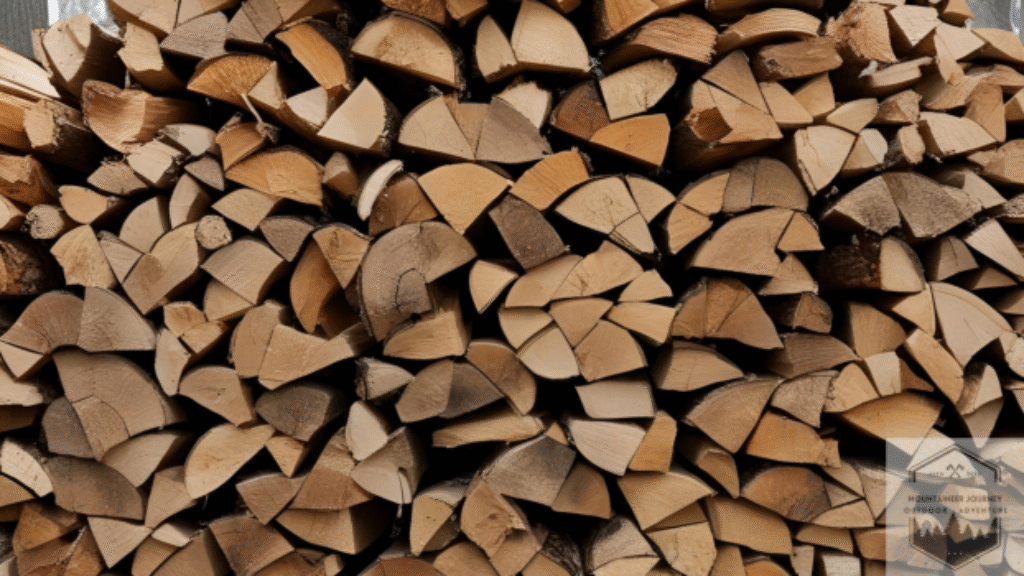How to Choose Sustainable Firewood | Expert Guide

Why Sustainable Firewood Matters
When it comes to heating our homes in the winter months firewood is the obvious choice. But not all firewood is created equal. The impact of our firewood choices on the environment can’t be ignored. With deforestation and climate change on the rise we need to choose sustainable firewood.
Choosing sustainable firewood not only protects our forests but reduces our carbon footprint. In this article we will look at why you should choose sustainable firewood and how to do it. This blog post will provide a detailed discussion about sustainable firewood practices and their positive impact on wildlife conservation.
First and foremost sustainable firewood comes from renewable sources. It’s harvested in a way that ensures the long term health and vitality of forests. This means for every tree cut down another one is planted so there’s a continuous cycle of regrowth. By choosing sustainable firewood we can support responsible forestry practices and help preserve our natural resources.
Also sustainable firewood has a much lower carbon footprint than other fuels. When firewood is burned it releases carbon dioxide (CO2) into the atmosphere. But if the firewood comes from sustainably managed forests the CO2 emissions are balanced by the trees ability to absorb CO2 during their growth. This creates a carbon neutral or even carbon negative effect reducing our overall impact on climate change.
Also choosing sustainable firewood can help reduce the spread of invasive species and pests. Transporting firewood from one area to another can introduce harmful insects or diseases to new ecosystems and cause damage to local flora and fauna.
By choosing local sustainably sourced firewood we can prevent the accidental spread of these invasive invaders.
In this article we will look at the different factors to consider when choosing sustainable firewood including tree species, seasoning methods and certifications to look out for.
By making the right choices we can enjoy the warmth of a fire while minimizing our impact on the environment and a greener future.

What is Sustainable Firewood?
When it comes to home heating and having a fire, firewood is the obvious choice. But we need to consider the sustainability of the firewood we choose so we’re not contributing to deforestation or harming the environment.
Sustainable firewood means wood that is harvested in an environmentally friendly way and doesn’t deplete forests or disturb ecosystems. This article will help you make the right choices when choosing firewood by giving you the low down on how to identify and choose sustainable.
One of the key things to consider when evaluating sustainable firewood is the source. Ideally sustainable firewood should come from managed forests or be a byproduct of sustainable forestry practices.
Choosing local firewood is another big one as it reduces transportation emissions and supports the local economy. Also avoid firewood from protected or endangered tree species as this can contribute to deforestation and loss of biodiversity.
Another important factor is the efficiency of the firewood.
Choosing denser firewood varieties like oak or hickory will give you longer and more efficient burns.
This means you’ll need fewer logs to heat your home reducing the overall demand for firewood. Also properly seasoned firewood which has been dried for at least 6 months burns more efficiently, reduces smoke emissions and minimises pollution.
By understanding what sustainable firewood is and being aware of its source and efficiency you can have a positive impact on the environment and still enjoy the warmth and comfort of a fire.

Types of Sustainable Firewood
When it comes to choosing sustainable firewood you need to consider the type of wood you use. Different types of wood have different levels of sustainability, efficiency and environmental impact. Here are the most sustainable options:
- Hardwoods: Hardwoods like oak, maple, ash, black cherry, and red maple are dense and slow burning. They give you longer burns and more heat making them a good choice for heating. Hardwoods also produce less smoke and creosote reducing air pollution and the risk of chimney fires.
- Fruit Trees: Fruit trees like apple, cherry and pear are sustainable firewood options. These trees are pruned to maintain their fruit production so it’s a renewable source of firewood. Fruitwood is easy to burn and has a pleasant aroma so good for indoor fireplaces and wood burning stoves.
- Softwoods: Softwoods like pine, spruce and fir may not give you the same heat output as hardwoods but they are still a sustainable firewood option. Softwoods are abundant and grow fast so it’s a renewable resource. They ignite easily, give a quick and warm fire which is good for starting fires or mild weather.
- Fallen Trees: Using fallen trees for firewood is a great sustainable option. Fallen trees are already dead and using them for firewood cleans up the environment and prevents potential hazards. But make sure the fallen wood is properly seasoned to avoid excessive smoke and poor burning efficiency.
By choosing sustainable firewood you can reduce your environmental footprint and promote a healthy ecosystem.
Check local regulations and guidelines before harvesting or buying firewood to ensure the wood is from sustainable sources. Also proper storage and seasoning of firewood will maximize its energy efficiency and minimize pollution.
What to Consider When Choosing Sustainable Firewood
When choosing firewood for your fireplace or wood burning stove you need to consider sustainability. Sustainable firewood reduces the environmental impact and gives you longer and more efficient burn. Here are the things to consider:
First, you need to choose firewood that is locally sourced. Choosing locally sourced firewood reduces transportation emissions and supports the local economy. Look for suppliers who practice responsible forestry management and sustainable harvesting.
This means the firewood is from well managed forests where trees are replanted to maintain the ecosystem balance. Cutting firewood for home heating not only saves on heating costs but also promotes ecological health by improving timber stands and generating income from unmarketable trees.
Another thing to consider is the type of wood. Different types of wood have different burn qualities and energy output. Hardwoods like oak, maple and birch are denser and burn longer and give more heat.
Softwoods like pine and fir burn faster but may give less heat. It’s good to use a mix of both hardwoods and softwoods for a balanced firewood selection.
Moisture content is also important. Wet or green firewood gives less heat and produces excessive smoke and pollutants. Choose firewood with moisture content below 20%. Dry firewood burns more efficiently, gives less smoke and reduces the risk of chimney fires.
Also consider the size and shape of the firewood. Choose split and seasoned logs cut to the right length for your fireplace or wood burning stove. This will give you consistent and efficient burn and easier to handle and stack.
In summary choosing sustainable firewood is about considering local sourcing, responsible forestry management, wood type, moisture content and size. By making the right choices you can have a warm and cozy fire and reduce the environmental impact.
Responsible Firewood Harvesting from Standing Dead Trees
When choosing firewood sustainability should be number one. Responsible firewood harvesting practices not only protects our forests but also ensures firewood supply for generations to come. So how can you ensure the firewood you choose is sustainable? Here are the things to consider.
First, you need to choose firewood from a renewable source. This means choosing wood from well managed forests or sustainably managed tree plantations. Don’t buy firewood that is illegally harvested or from sensitive ecosystems like old growth forests or protected areas.
By doing so you will help preserve biodiversity and protect the habitats of many plant and animal species. Additionally, dead trees play a crucial role in forest ecosystems by providing resources for fungi and invertebrates, which enhances biodiversity and ecological health. Standing dead trees, or ‘snags’, are particularly important as they provide habitat for various wildlife, especially cavity-nesting birds, and contribute to nutrient cycling and forest succession.
Also you need to use firewood that is properly seasoned. Green or freshly cut wood burns inefficiently and releases more pollutants into the air. Seasoned wood has been dried for a long time so it burns cleaner and gives more heat. Look for firewood that has been aged for at least 6 months to a year for better performance and reduced environmental impact.
Also consider the transportation of firewood. Choosing local firewood reduces the carbon footprint of long distance transportation. It also supports local economy and reduces the risk of introducing invasive species or diseases to new areas.
If you can’t find local firewood choose certified firewood that has been responsibly sourced and transported to minimize the negative environmental impact.
By following these responsible firewood harvesting practices you can have a warm and cozy fire and contribute to the sustainability of our forests and environment. Remember every small step counts in protecting our natural resources for the future.
Tips for Storing and Maintaining Seasoned Sustainable Firewood
When choosing sustainable firewood you need to not only consider the source but also how you store and maintain it. Proper storage and maintenance will ensure your firewood stays dry, clean and ready to burn. First, store firewood in a well ventilated area that is protected from rain and snow.
This will prevent moisture from seeping into the wood which can cause mold to grow and make it hard to ignite. Also stack the firewood off the ground on a raised platform or pallet to prevent moisture absorption. Regularly inspect the wood for signs of infestation is also important to maintain its quality. Look for small holes or sawdust like debris, these could be signs of insects or pests.
If you see any signs of infestation remove the affected pieces and treat the remaining firewood accordingly. Lastly maintain a dry and clean firewood storage area will preserve the quality of the wood.
Clear any debris or fallen leaves regularly to prevent them from accumulating moisture or attracting pests.
By following these tips you can ensure your firewood remains sustainable and in good condition for efficient burning, reduce your environmental impact and heating costs.
Wood Stove Use in Urban Areas
When choosing sustainable firewood in urban areas there are some extra considerations to take into account. First, check the regulations and restrictions imposed by local authorities.
Many cities have specific rules on what type of firewood can be used, the size of the fire and the designated areas for burning. These rules are in place to protect urban residents and minimize air pollution. So make sure to check these guidelines before buying firewood.
Another thing to consider is the availability of sustainable firewood in urban areas. As cities are densely populated the demand for firewood is high. This can lead to overharvesting and deforestation if not managed properly.
It’s recommended to source firewood from certified sustainable suppliers who practice responsible forestry. These suppliers ensure the firewood is harvested sustainably, reduces the environmental impact and promotes forest regeneration.
Also consider the transportation and logistics of firewood in urban areas. Choose a supplier who is local to minimize the carbon footprint of long distance transportation. Or look for suppliers who offer kiln dried firewood as it has lower moisture content and burns more efficiently, reduces the amount of wood needed and emissions produced.
Lastly consider alternative heating options in urban areas. With limited space and air pollution concerns electric or eco friendly heating may be more suitable for some urban households. These options reduces the reliance on firewood and the environment.
Frequently Asked Questions
What is the most sustainable firewood?
The most sustainable firewood is usually sourced from local, managed forests or woodlands where sustainable forestry practices are in place.
These practices ensures that the growth rate of trees is equal to or greater than the harvest rate. Here are the key factors that makes firewood sustainable:
Locally Sourced: Firewood from local sources reduces transportation emissions and supports local ecosystems and economy.
Forest Stewardship Council (FSC) Certified: FSC certified wood is a good choice as it ensures the wood was harvested in a way that preserves biodiversity and benefits local people and workers while ensuring economic viability.
Wood from Tree Thinning: Wood from trees that have been thinned out to maintain forest health is another option. This method helps to improve the health and growth rate of the remaining trees.
Dead or Fallen Trees: Using dead or naturally fallen trees for firewood is also sustainable as it doesn’t contribute to deforestation and clears the ground for new growth.
What is eco firewood?
Eco firewood means firewood with minimal environmental impact from harvesting, processing to burning. Some types of eco firewood are:
Wood Briquettes and Pellets: These are made from compressed sawdust and other wood waste, using materials that would otherwise go to landfill. They burn cleaner and more efficient than regular wood logs.
Seasoned Wood: Wood that has been dried for at least 6 months to 2 years burns more efficient and produces less emissions than unseasoned wood.
Non-Toxic Treated Wood: Eco firewood should be free from chemicals or toxic treatments. Using reclaimed wood not treated with chemicals is also a sustainable option.
Heat Logs: These are another type of manufactured wood logs that are eco friendly, made from 100% recycled wood and produces high heat output with less smoke.
Both eco firewood options reduces deforestation, lower emissions and less environmental impact than regular firewood.
More Articles
How To Season Firewood Like A Pro
Adventure Awaits,
Tyler






